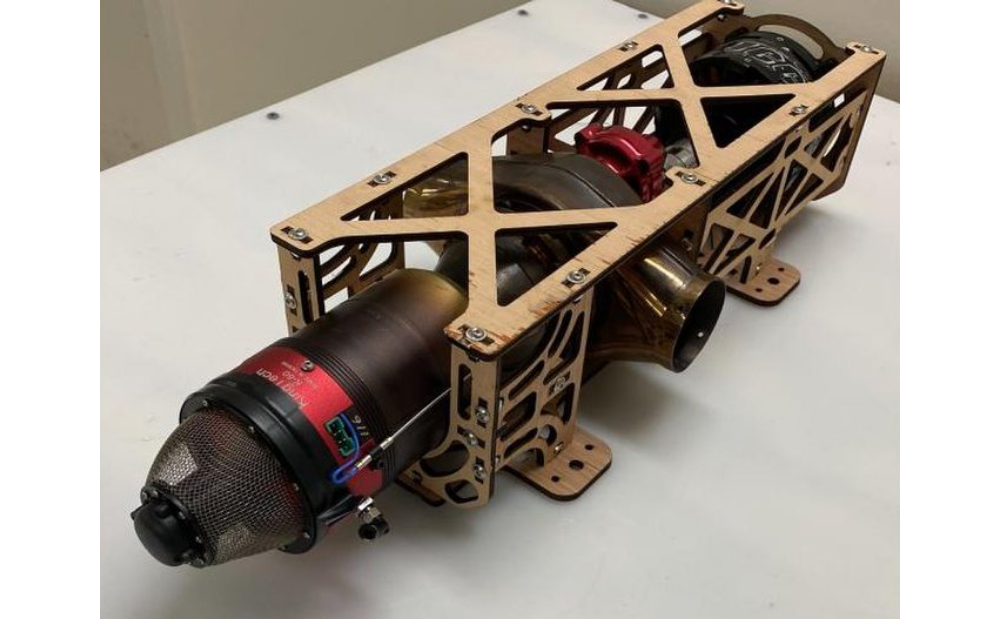A team of aerospace engineering students from Oklahoma State University has designed and built a turbo-electric drone engine as part of a program sponsored by the U.S. Army.
“It’s no fun designing just a very small piece of an airplane. If I was an aerospace engineer working for Boeing, I’d be designing the exact angle for an inlet or something like that,” Joshua Johnsen said. “And I think doing something like this, where it’s much more of a grand scale, encompassing the integration of an entire (aircraft), I really enjoyed it.”
Their innovative propulsion system goes beyond traditional battery-powered or combustion engines by combining the two technologies into a more efficient power source. Instead of burning fuel to mechanically operate pistons and a propeller, the gas turbine engine burns energy-dense jet fuel to generate electricity that’s stored in a battery.
Johnsen and his team, which includes fellow grad students Timothy Runnels and Johnathan Burgess, were selected to participate in the Firepoint C3 Challenge. It’s a partnership between Wichita State University and the Army’s Combat Capabilities Development Command Aviation and Missile Center to design a next-generation unmanned aerial vehicle concept. Their adviser is Kurt Rouser, assistant professor of aerospace engineering at OSU.
The technology they’ve designed and built eventually could be scaled up to power manned aircraft. Johnsen and Runnels have planned a doctoral research project studying how to integrate a more powerful version of their engine with a Cessna. Based on their results, they will then write recommendations for the Federal Aviation Administration.
“The FAA expects companies to become more interested in turbine-powered electric aircraft. Battery technology is improving quite steadily, but at this current moment, the energy density of something like jet fuel is much higher than the energy density of batteries,” Johnsen said. “You can go a lot further on something on jet fuel that’s powering electric motors and these hybrid systems, but they’re a lot more complicated.”
But first, they’ll need to complete the Firepoint C3 Challenge. They’ve joined two other teams in the challenge who are providing the airframe and lift solutions. Buhler High School Science Club from Wichita built a dirigible that creates lift by extracting hydrogen from the atmosphere. Students from the University of Tennessee-Knoxville will provide a lightweight 3D-printed airframe. The challenge includes grants totalling $35,000.
The lighter-than-air dirigible will allow the drone to take off vertically, then launch under its own power using the OSU students’ engine.
In about a month, the team will give their preliminary design report to Firepoint and others in the military and aerospace industry. A demonstration of the fully-integrated drone is expected early next year.
“We should have all the pieces we need,” said Runnels. “We might change some parts out just to kind of optimize the system a bit more. We’ve got all the jet engine and generator parts, and the next step I’m working on is getting a kind of housing system to hold all of those together in the plane.”
They successfully tested the engine on their own drone in July.
Burgess said the team has a strong understanding of the turbo-electric system and is now working to make sure the engine is the best it can be.
“That design is kind of an open-ended design, but all of the components are pretty well nailed down,” he said.
Source: The Oklahoman

